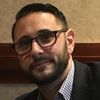Leading up to President Obama's historic trip, I was asked by a reporter when he decided to visit Hiroshima? I responded: "June 12, 1982." On that day, thirty-four years ago, 1 million citizens marched through New York City for nuclear disarmament. Most remember it as the largest single demonstration in United States history. However, the march also showed that at the height of the Cold War, citizens were not willing to simply criticize President Reagan. They organized, built coalitions, and marched for a reduction of all nuclear weapons and a transfer of military budgets to "human needs." The June 12 rally demonstrated the power of bringing in diverse voices to the peace movement and how nuclear weapons and civil rights were inextricably linked.
When the rally was organized, minority participation included the Reverend Herbert Daughtry's National Black United Front (BUF), the Asian American Caucus for Disarmament, Hispanics for Survival and Disarmament, and the African American Coordinating Committee. The latter served as an umbrella group for Harlem Fight Back, the National Alliance Against Racist and Political Repression, Women for Racial and Economic Equality, the National Conference of Black Lawyers, the National Tenants Organization, Black Veterans for Social Justice, the National Conference of Black Pastors, and many others. Led largely by BUF, the minority groups formed the Third World and Progressive People's Coalition and called for unilateral nuclear disarmament, an end to U.S. military aggression in Central America, and an end to racism in the U.S.
The official planning committee of the June 12 march, made up mostly of traditional peace groups, however, did not want minority participation at the rally. John Collins of Clergy and Laity Concerned (CALC), a group that was a founding member of the June 12 Rally Committee, argued that a lot of the difficulties arose out of the fact that "the peace and environmental movements tended to be white and middle class and to a certain degree racist...not in the sense of the KKK or that kind of thing. It's just that a lot people in white groups don't know how to relate to and work with Third World groups."
War Resister's League leader David McReynolds criticized the peace movement for allowing African American groups to march. "For better or worse, it is not on civil rights or the persistent brutalization of poor Americans," he said. However, Charlene Mitchell, executive secretary of the National Alliance Against Racist and Political Repression, maintained that now was the time to unify "black, white, Native American, Hispanic, and other nationally oppressed people" for nuclear disarmament.
In an effort to find common ground, the Black United Front, led by Rev. Daughtry met with the Rally Committee. When the rally finally took place, 50 percent of the leadership was black. One million demonstrators marched through Central Park and midtown Manhattan. Companion rallies were held at both the Rose Bowl in Pasadena (90,000 in attendance), and in San Francisco (50,000). Dick Gregory, Chaka Kahn, Toni Morrison, Sweet Honey in the Rock, Rita Marley, and Harry Belafonte were among the marchers. Ossie Davis and Ruby Dee were on stage as Coretta Scott King declared: "All of our hopes for equality, for justice, economic security, for a healthy environment, depend on nuclear disarmament." As demonstrators proceeded to the United Nations, Harlem Fight Back, the New York Teachers Black Caucus, and other predominately black groups marched down to Seventh Avenue. On 110th Street and Lexington, they were joined by the East Harlem contingent under the banner of Hispanics for Survival.
In Harlem, black ministers stated, "When you take a look at the military budget and then at our decaying cities, you can see that we are already victims of war." The Coalition of Black Trade Unionists passed a resolution that called on the U.S. to renounce the "first use of nuclear weapons." In an editorial published in the New York Amsterdam News the day of the rally, Harlem Fight Back, argued racism and the nuclear arms race were related, citing the theft of Native American lands for uranium and the building of one of the world's major nuclear arsenals in South Africa.
As a college student at Columbia University, President Obama reported on the June 12 rally. He argued that "nuclear weapons were linked to economics and politics and part of a larger problem-militarism." He continued to think and write about the nuclear issue throughout his academic career, thus starting him on his eventual path to Hiroshima. Now, thirty-four years later, it is time for us to heed Obama's call for a "moral awakening." We need to build coalitions, incorporate diverse voices, and reignite the antinuclear movement that was once so vibrant.
When we wanted to end the Vietnam War we did not wait for Nixon to bring all of the troops home. When we wanted civil rights, we did not wait for Johnson to sign the Civil Rights and Voting Rights Act. When we wanted marriage equality, we did not wait for politicians to evolve. In all cases, we made it happen. Why should nuclear disarmament be any different? President Obama's speech must not be the end, but the beginning of a new movement for nuclear disarmament. June 12, 1982 proves it can be done. What are we waiting for?
A portion of this article is an excerpt from Vincent Intondi's African Americans Against the Bomb: Nuclear Weapons, Colonialism, and the Black Freedom Movement published on Stanford University Press.
